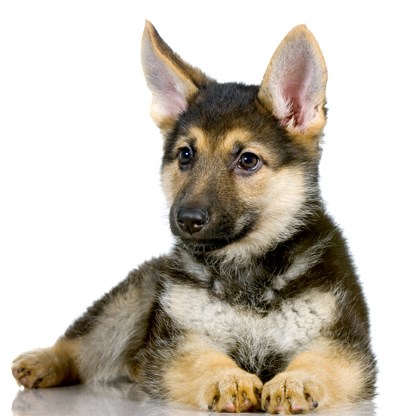When teaching a dog a behaviour that requires patience, it is advantageous to the learning process if the owner possesses this quality as well.
I met my new client at the start of a hiking trail. He was parked in the lot and inside his vehicle his young dog was barking up a storm to rival anything that El Nino has thrown at us. "Has this been going on for a while?" I asked. "Yes, yes. Since he was about nine months of age. He just knows this trail and as soon as we park he begins to freak out," the owner replied "I see. I gather that he probably is quite anxious at the front door before you go out as well?" I continue my interrogation.
"Yes, but it's not a bother because he is not barking. He just jumps, spins and pants a lot. The drool that flings everywhere is a bit of a pain, but we deal with it," he replies, and begins to fidget with his cellphone in his pocket while nodding his head in response to my question. Then he asks, "Is this going to take long?" I take a deep slow inhale, then speak just as slowly, "That all depends." "On what? What does it depend on?" "It depends on what you've got to do that's more important than your dog right now and how long it's going to take to teach you patience."
My client furrowed his brow in confusion, then I saw the light go on. He sighed as he looked at his dog who was now licking his slobber off the inside of the windows. "Where do we begin?" he asked.
I smiled at him and asked, "Does he know how to sit?" "Yes," he replied. "Then we start there." In this situation, the young dog had never been taught patience and was inadvertently rewarded for his impatience by his owner's impatience. The faster the dog reacted, the faster he got out the door, or into the car, or out of the car. But at some point, the dog's behaviour outraced the owner's ability to respond and the dog started to become anxious. This is when other unwanted behaviours developed as the dog attempted to speed up his owner's response.
This can be a very challenging behaviour to break, especially if the owner is also impatient and unable to recognize the difference between a dog anxiously complying with a command and a dog that is truly responding calmly.
The sit command is a great place to start. I prefer to implement patience training in an environment where distractions are minimized, such as in the home, but still using a situation where a dog is impatient.
Since my client's dog showed impatience at the front door, we began our training there. With the dog leashed, he was asked to sit, which he did at lightning speed. Typically the owner would then open the door and walk out. This sounds like a perfect reward for sitting (and it was a few months ago) but the owner failed to see the problem when the dog began getting anxious. Now the dog was being rewarded for his anxiety rather than prompt obedience. So we waited. Eventually the dog broke the sit in impatience. We then asked the dog to sit again, but still we went nowhere. We allowed the dog to go through his ritual of impatient behaviour, which included spinning, jumping, panting and scratching at the door. After no response from his owner, he eventually let out a deep sigh and relaxed. With his calmer body language, softer eyes and genuinely relaxed demeanour, we walked out the front door.
Teaching patience, self control and impulse control should be a priority for all new dog owners, regardless of the age of their dog. But these qualities can only be taught if the owners themselves possess them because you can't teach what you don't know.
Joan Klucha has been working with dogs for more than 15 years in obedience, tracking and behavioural rehabilitation. Contact her through her website k9kinship.com.



